Time: 10:30AM – 3:00PM
Location: National Forest land
North Fork of Ten Mile Creek 07/26/2024 Photo Album
My fly fishing friend, Nate, was in scooter/bicycle accident that resulted in a broken ring finger on his left hand. He is right handed, and like many of us, is a fly fishing fanatic. Unfortunately, his recent visit to the doctor resulted in a large cast on his left arm that stabilized his wrist and entire hand except for his index finger and thumb. His devotion to fly fishing was so intense that he attempted to fish a couple times, and he managed most of the necessary actions. The one activity that was difficult to perform with one hand was netting a fish, removing the fly and releasing the fish.
I fished for three consecutive days at the beginning of the week, but I was not satiated, so I offered to accompany Nate on a fishing trip. I suggested that we could fish together and alternate pools, so that I would be nearby to assist should he hook and land fish. Initially Nate rejected my offer, as he felt that fishing was too big a risk for his recovery, but eventually his strong desire to fish during one of the prime seasons of the year trumped other concerns, and we planned a day on his off day of Friday.
 Charcoal Body on This Brook Trout
Charcoal Body on This Brook Trout
For a destination I suggested that we visit the North Fork of Ten Mile Creek. I fished there nine days ago with great success, and it met the criteria of a small stream with lots of fish that required anglers to alternate pools. Nate and I met at the Woolly Mammoth parking lot at 8AM, and we arrived at the North Fork parking lot by 9:00AM. After a rest stop break and assembling our gear, we hiked along the trail and approached a nice section of the creek for dry fly fishing. I chose my Orvis Access four weight and stuffed my raincoat and lunch in my backpack, The temperature at the start was a cool 61 degrees, even though the high in Denver was projected to hit 91 degrees. Corner Pocket
Corner Pocket
I began my day with a peacock hippie stomper, and Nate and I began alternating, as we progressed methodically up the creek. We failed to generate interest in the first four glassy smooth pools, but eventually we began to meet with success, I added a hares ear nymph on a dropper, and this move resulted in two landed brook trout. By lunch time Nate recorded seven landed brook trout, and I notched five. We only counted fish over six inches, but very few sub-six inch fish visited our nets during the fly fishing prior to lunch. Nate was remarkably self sufficient in one-handed mode, but I did assist with a few hook removals and releases.
By lunch time some dark clouds obscured the sun, and the wind kicked up even more than what we had already experienced, so I dug out my raincoat for warmth and as a windbreaker. I was pleased with this move, as the rain shell remained in place for the remainder of our time on the water.
For some reason the fishing slowed considerably after lunch. We agreed that some of this was attributable to the quality of the water. Most of our action originated in deeper water next to faster currents, and the early afternoon featured numerous glassy smooth pools and shallow riffles. We approached these locales with stealth, but the number of darting fish was significant. Even relatively long casts with soft landings sent the wild trout scurrying for cover.
In response to the slow action I added a size 16 light gray comparadun on a twelve inch dropper, and the comparadun accounted for a pair of trout. As more time elapsed, however, the hippie stomper once again began to dominate the appetites of the trout, and the trailing comparadun was a nuisance, so I removed it and fished the stomper solo.
By 2:15PM the sky darkened, and a light rain descended. Nate was very concerned about getting his cast wet, so he retreated among a dense stand of tall evergreens for cover. As I mentioned, I was already cloaked in my raincoat, so I persisted through the rain and ramped up my fish count to eleven. After fifteen minutes the rain stopped, and the sun reappeared, and Nate resumed his fly fishing adventure. I relinquished my casting turns, and Nate upped his fish count to ten, so we called it a day and hiked back to the car.
Nate and I agreed that the biggest difference between my visit of 07/16/2024 and Friday, 07/26/2024 was the decrease in flows. Clearly the lower volume of water along with extreme clarity made the fly fishing significantly more demanding. The conditions dictated long casts and light deliveries. The difficulty was enhanced by the strong wind that made delivering a fly to a tight spot an extreme challenge. Placing casts in narrow slots beneath bushes and along the banks was frequently a risk of a snag or errant cast. In spite of these drawbacks we persisted and logged a fun day. Above all it was a pleasure to fish along side Nate. His fly fishing abilities have progressed significantly since we last met on a stream. Hopefully his recovery is rapid, and he is able to participate in some outstanding fly fishing over the remainder of the summer and fall.
Fish Landed: 11

 Pastel Hues
Pastel Hues Nate Threaded the Needle Here
Nate Threaded the Needle Here Clear and Smooth
Clear and Smooth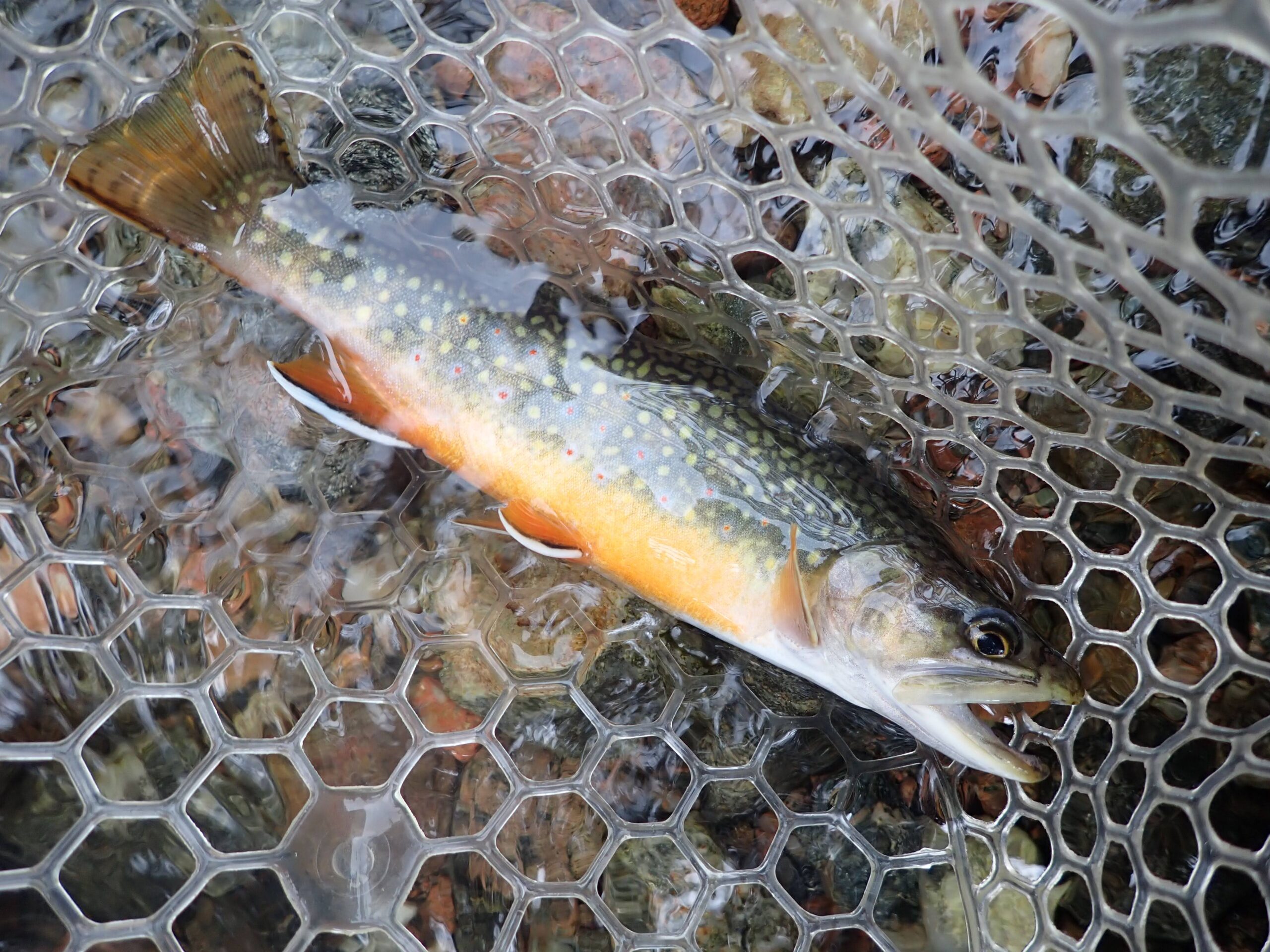 Nature’s Palette
Nature’s Palette Handful
Handful Short Pool
Short Pool Great Place to Start
Great Place to Start Off and Running
Off and Running Wide Section
Wide Section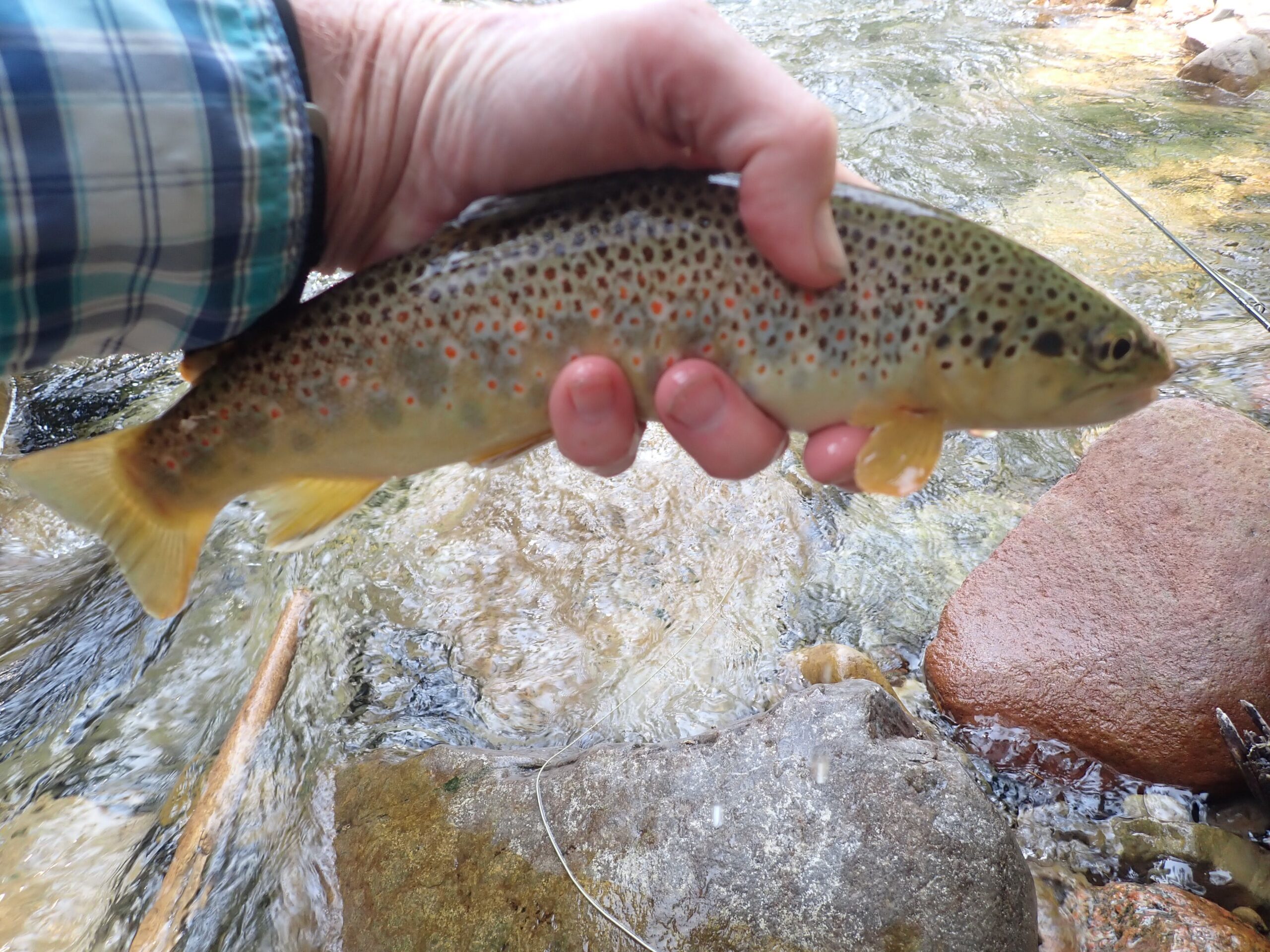 Pleased with This One
Pleased with This One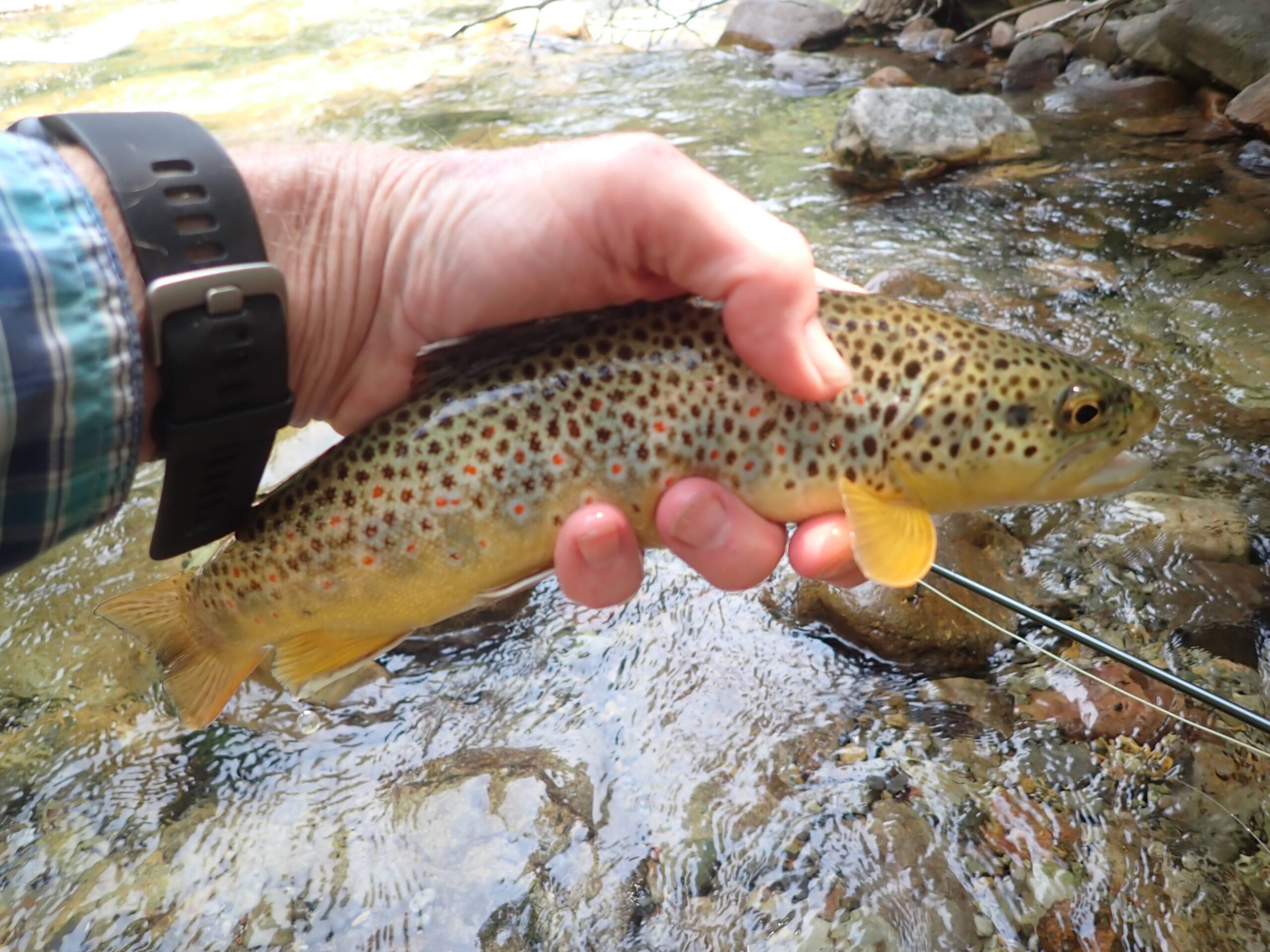 Another Brown Trout Prize
Another Brown Trout Prize Quite a Pool
Quite a Pool Deep Frothy Hole
Deep Frothy Hole Tough Wading Ahead
Tough Wading Ahead Best on the Day
Best on the Day Nondescript Home of Best Fish of the Day
Nondescript Home of Best Fish of the Day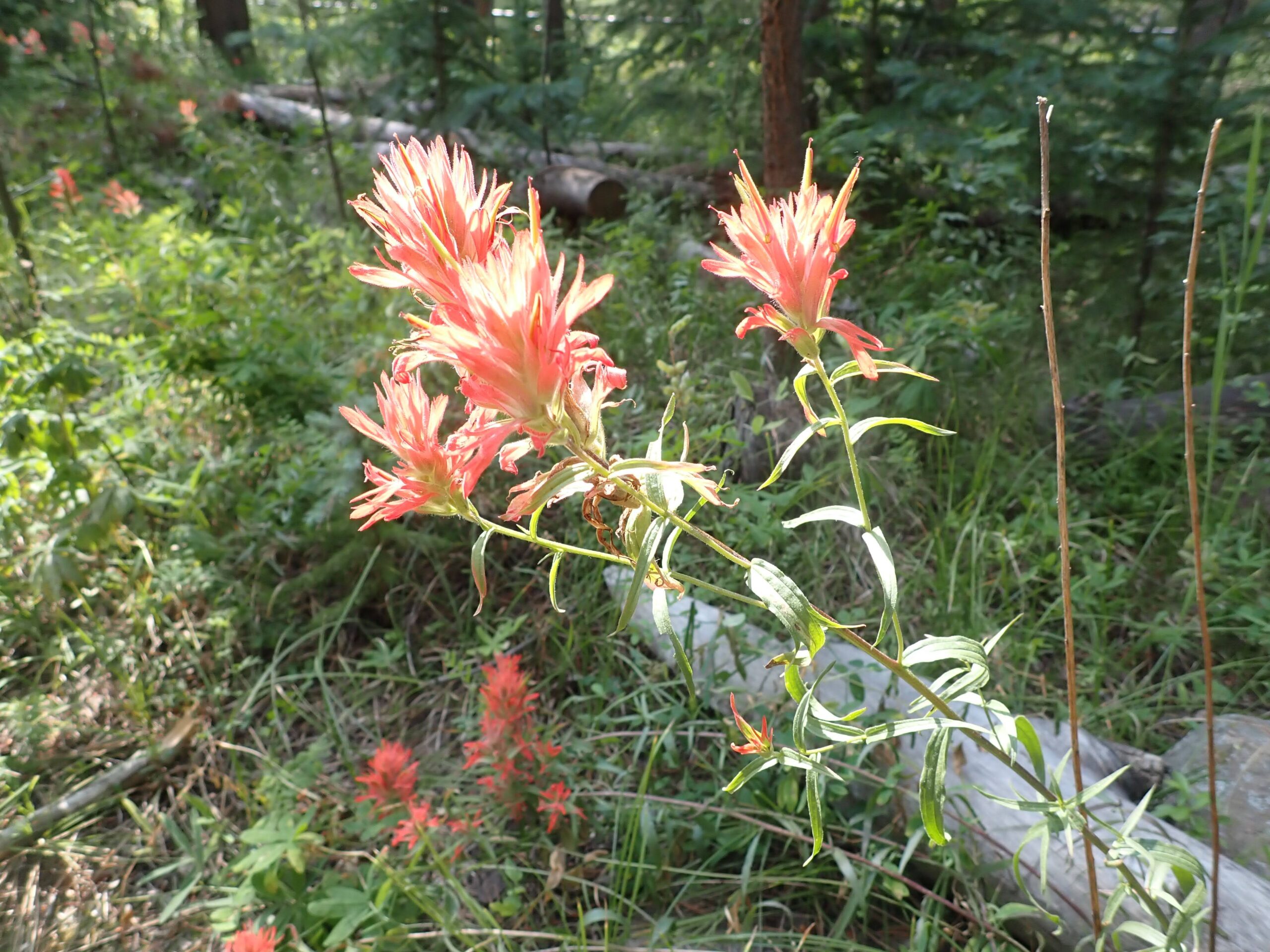 Indian Paintbrush in Abundance
Indian Paintbrush in Abundance Lots of Pocket Water in This Creek
Lots of Pocket Water in This Creek Orange and Yellow Dominate
Orange and Yellow Dominate One of the better Pools
One of the better Pools Pastel Colors
Pastel Colors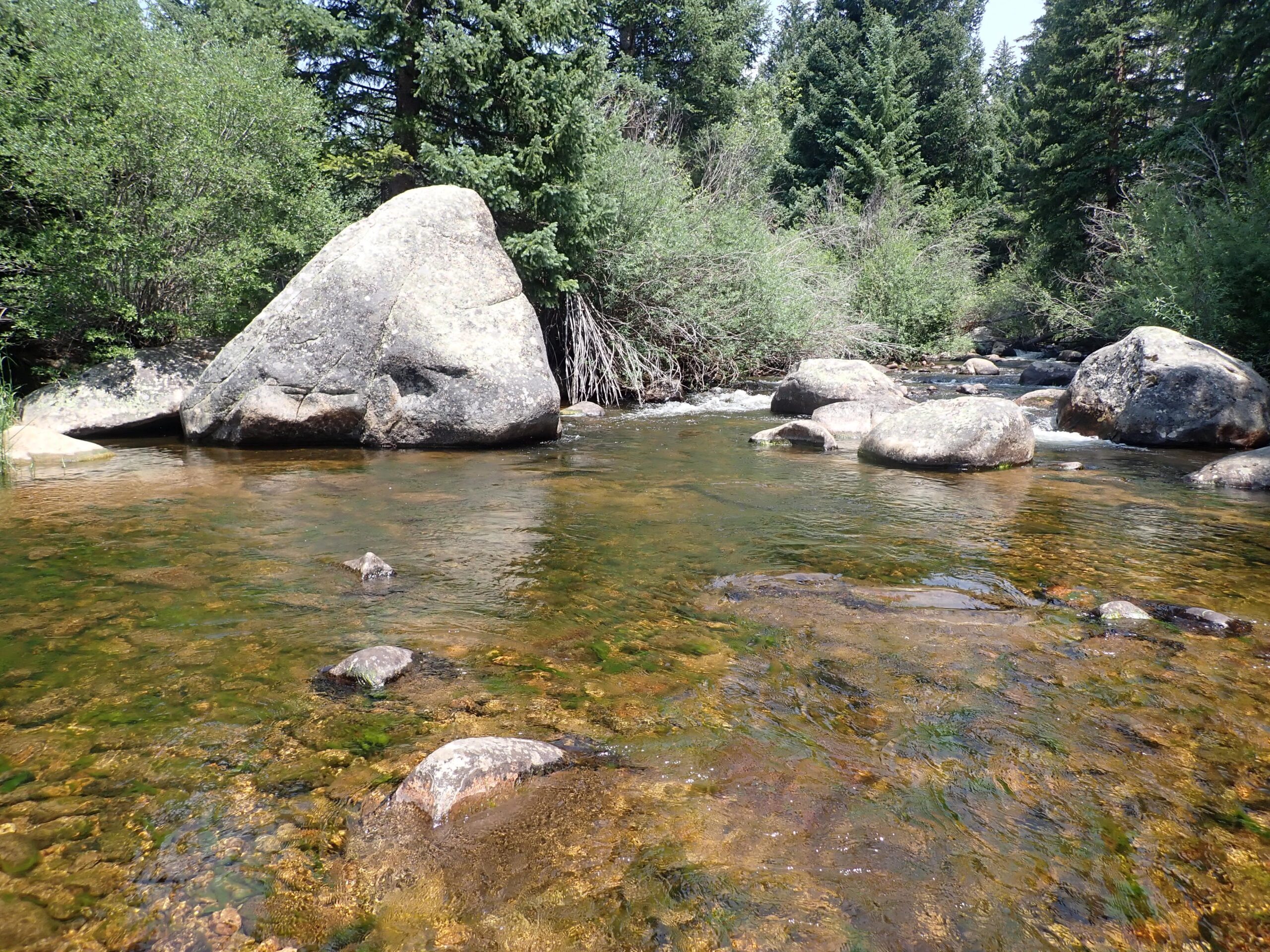 Another Prime Pool
Another Prime Pool Brook Trout Perfection Here
Brook Trout Perfection Here Best Pool I Saw
Best Pool I Saw Productive Spot
Productive Spot Lower Gradient Section
Lower Gradient Section Decent
Decent Shimmering
Shimmering Rare Shelf Pools
Rare Shelf Pools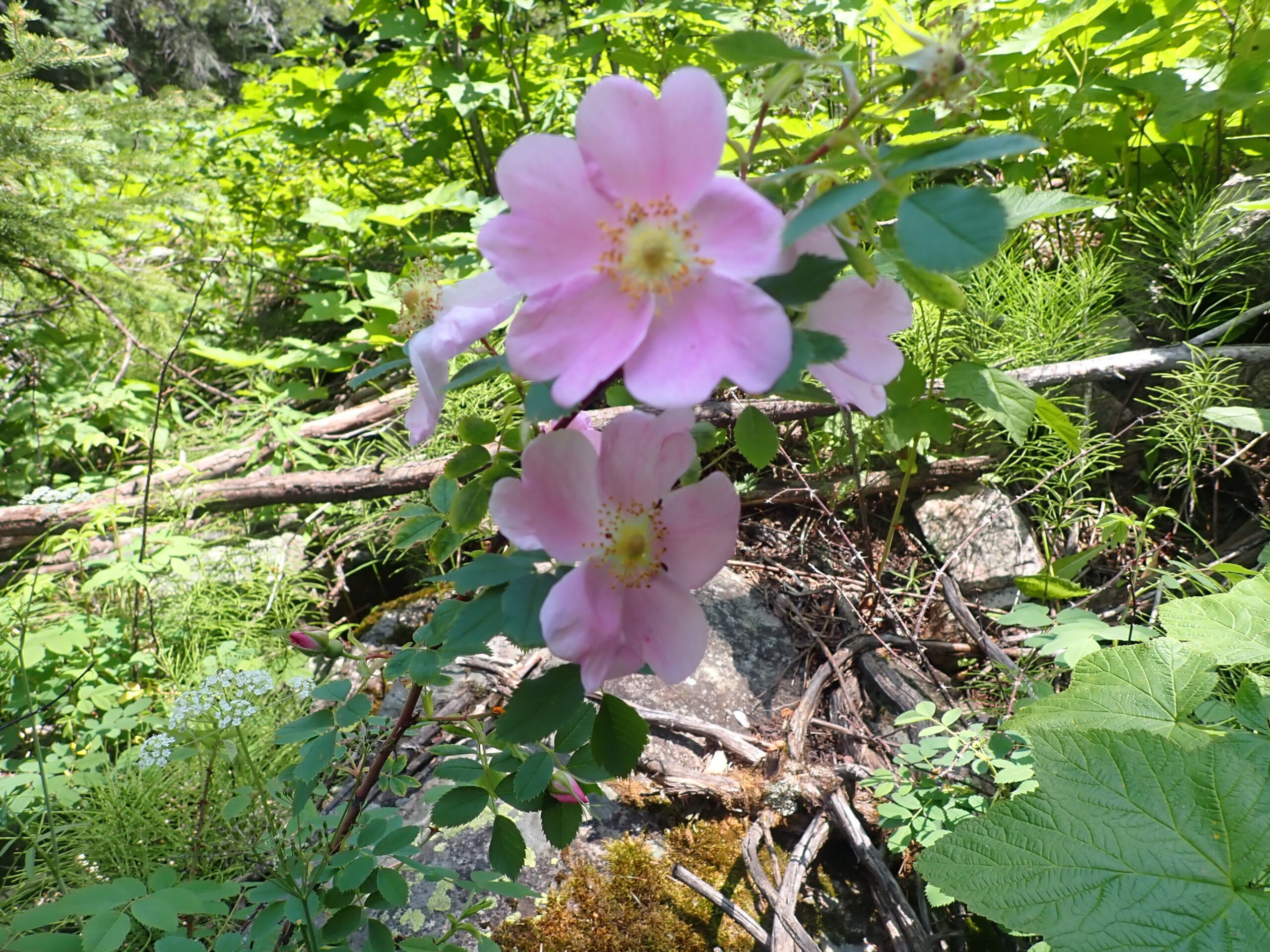 Wild Roses
Wild Roses One Cutthroat Among Many Brook Trout
One Cutthroat Among Many Brook Trout Cutthroat Came from Deep Along the Whitewater Seam
Cutthroat Came from Deep Along the Whitewater Seam Seam Along Whitewater Produced a Nice Brown Trout
Seam Along Whitewater Produced a Nice Brown Trout Nice Catch after All the Small Brook Trout
Nice Catch after All the Small Brook Trout Another Nice Catch
Another Nice Catch Marginal Bank Pocket Produced a Surprisingly Large Fish
Marginal Bank Pocket Produced a Surprisingly Large Fish Another Typical Productive Pocket
Another Typical Productive Pocket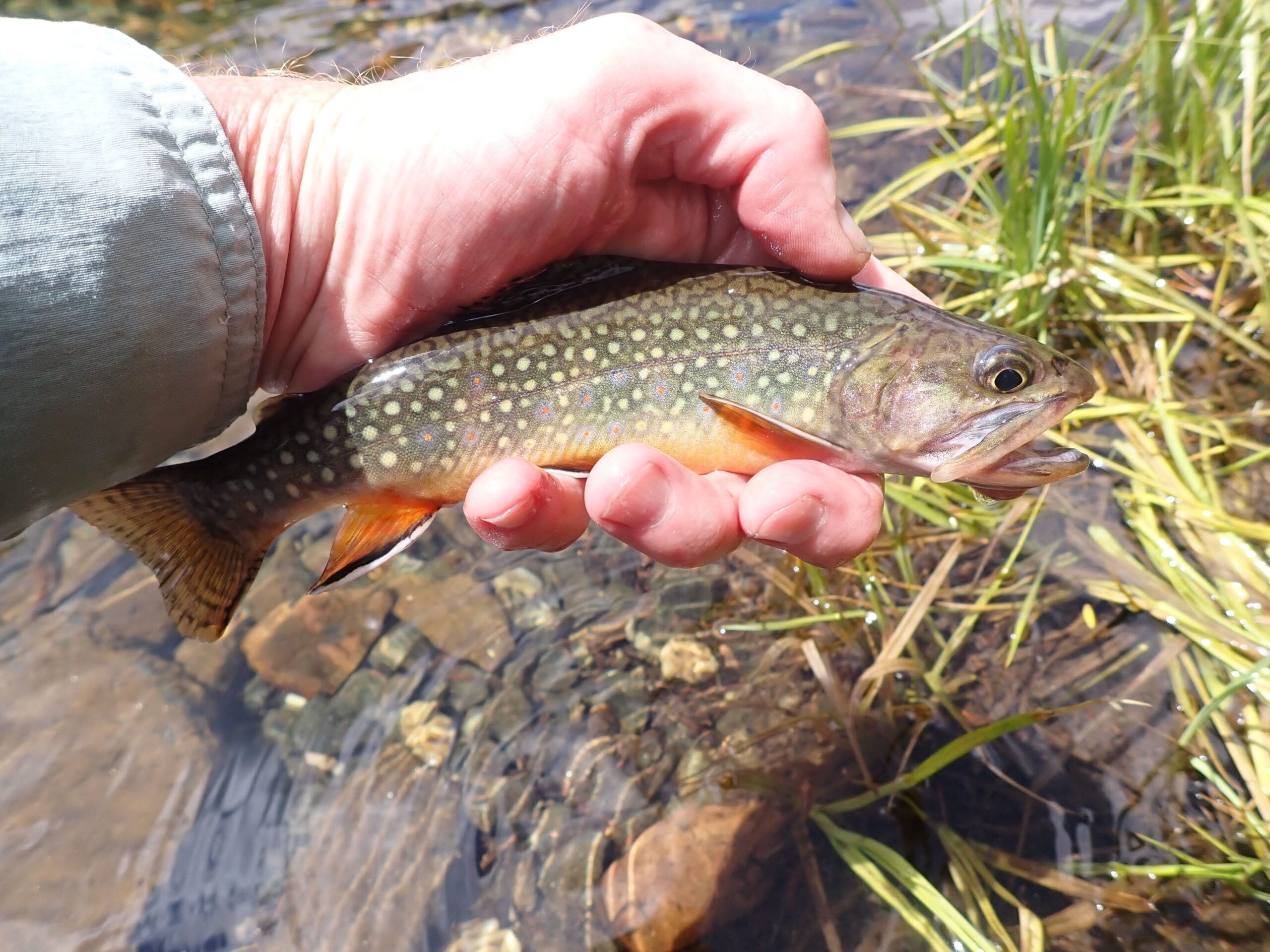 Number One
Number One Smooth
Smooth Brilliant
Brilliant Distracted from Fly Fishing by Wildflowers
Distracted from Fly Fishing by Wildflowers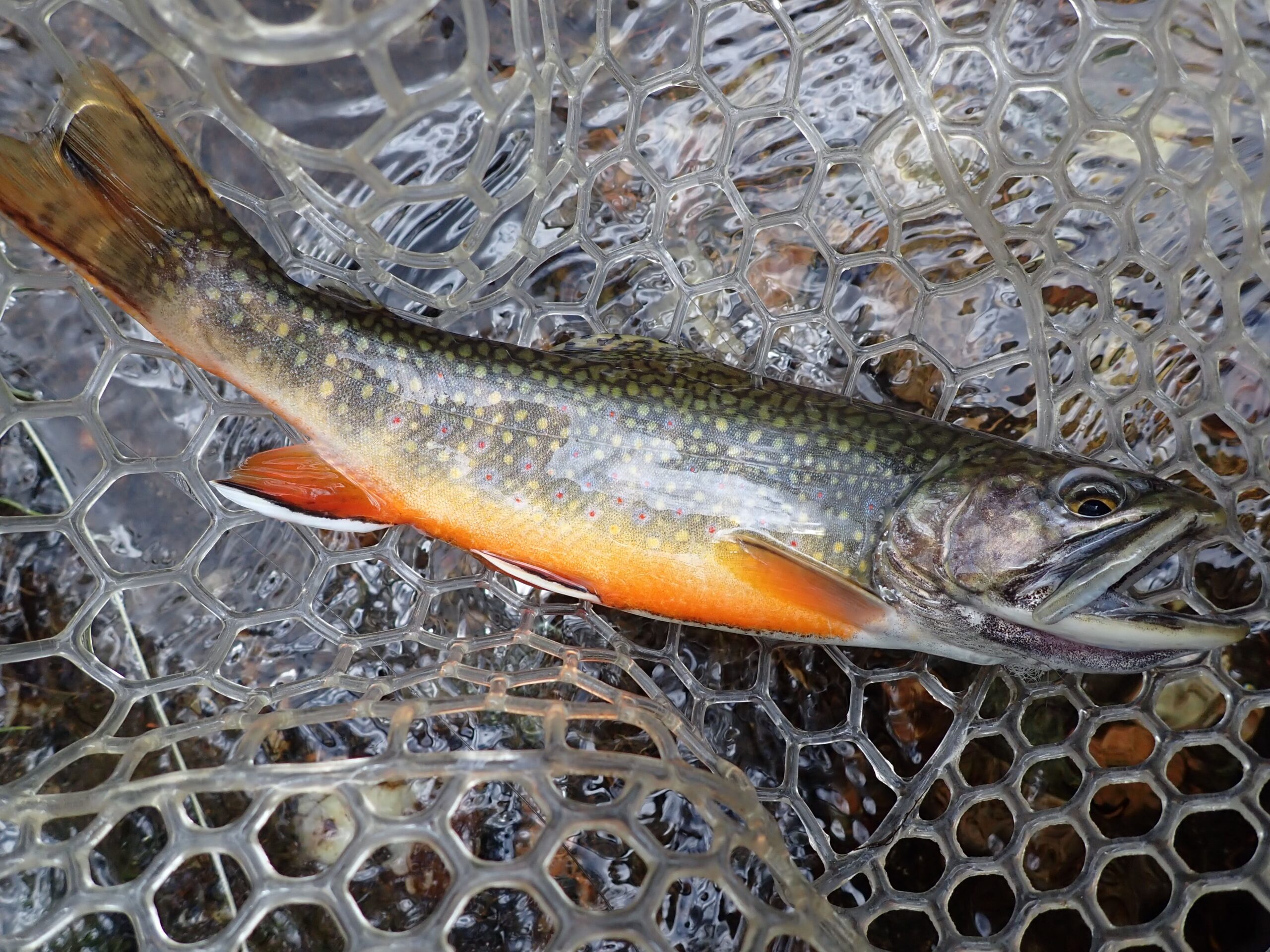 Very Dark Coloration
Very Dark Coloration Gorgeous Run
Gorgeous Run One More Gem
One More Gem Clear and Moderate Flows
Clear and Moderate Flows Narrow Canyon
Narrow Canyon Recovered Wading Staff
Recovered Wading Staff Same Stream, Different Look
Same Stream, Different Look Best Fish of the Day
Best Fish of the Day Next to Grassy Clump Was Brown Trout Home
Next to Grassy Clump Was Brown Trout Home Camouflage
Camouflage Competing Angler
Competing Angler Start of Lower Gradient Section
Start of Lower Gradient Section Greedy Brook Trout Were Prevalent
Greedy Brook Trout Were Prevalent Undercut Bank Produced a Gorgeous Brown Trout
Undercut Bank Produced a Gorgeous Brown Trout Undercut Bank Brown Trout
Undercut Bank Brown Trout Very Pretty and Very Productive Pool
Very Pretty and Very Productive Pool Loved These Occasional Brown Trout
Loved These Occasional Brown Trout Another Respectable Small Stream Brown Trout
Another Respectable Small Stream Brown Trout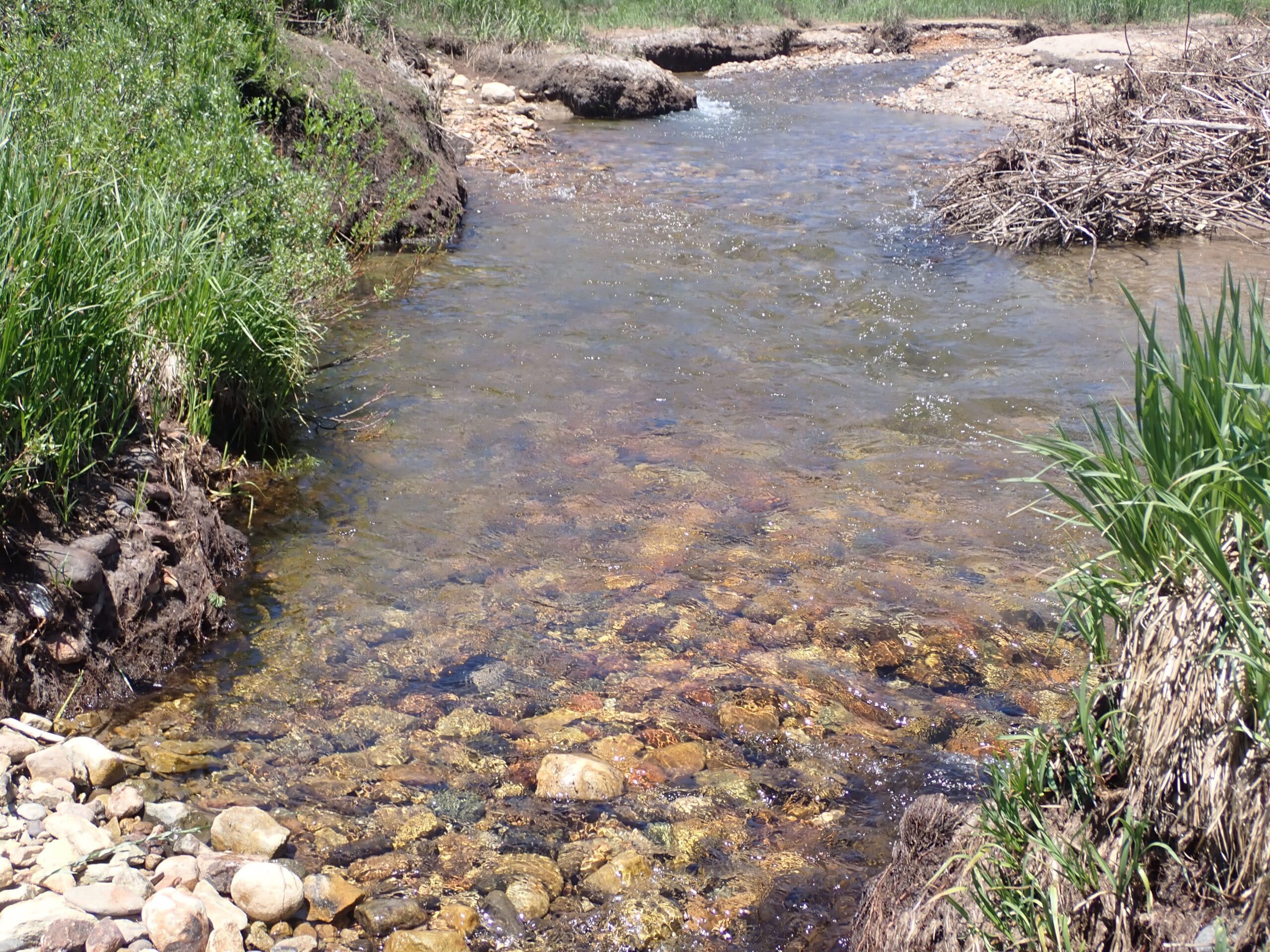 Shelf Pool Produced
Shelf Pool Produced Resting Brook Trout
Resting Brook Trout Aggressive Brown Trout
Aggressive Brown Trout Brook Trout Haven
Brook Trout Haven Hornsilver Camping Setup
Hornsilver Camping Setup Frost on the Tablecloth
Frost on the Tablecloth Flows Remained High on Tuesday
Flows Remained High on Tuesday Early Catch
Early Catch Talon Scarred Rainbow Trout
Talon Scarred Rainbow Trout New Location, Nice Brown Trout
New Location, Nice Brown Trout Pockets Galore
Pockets Galore Surprise Catch
Surprise Catch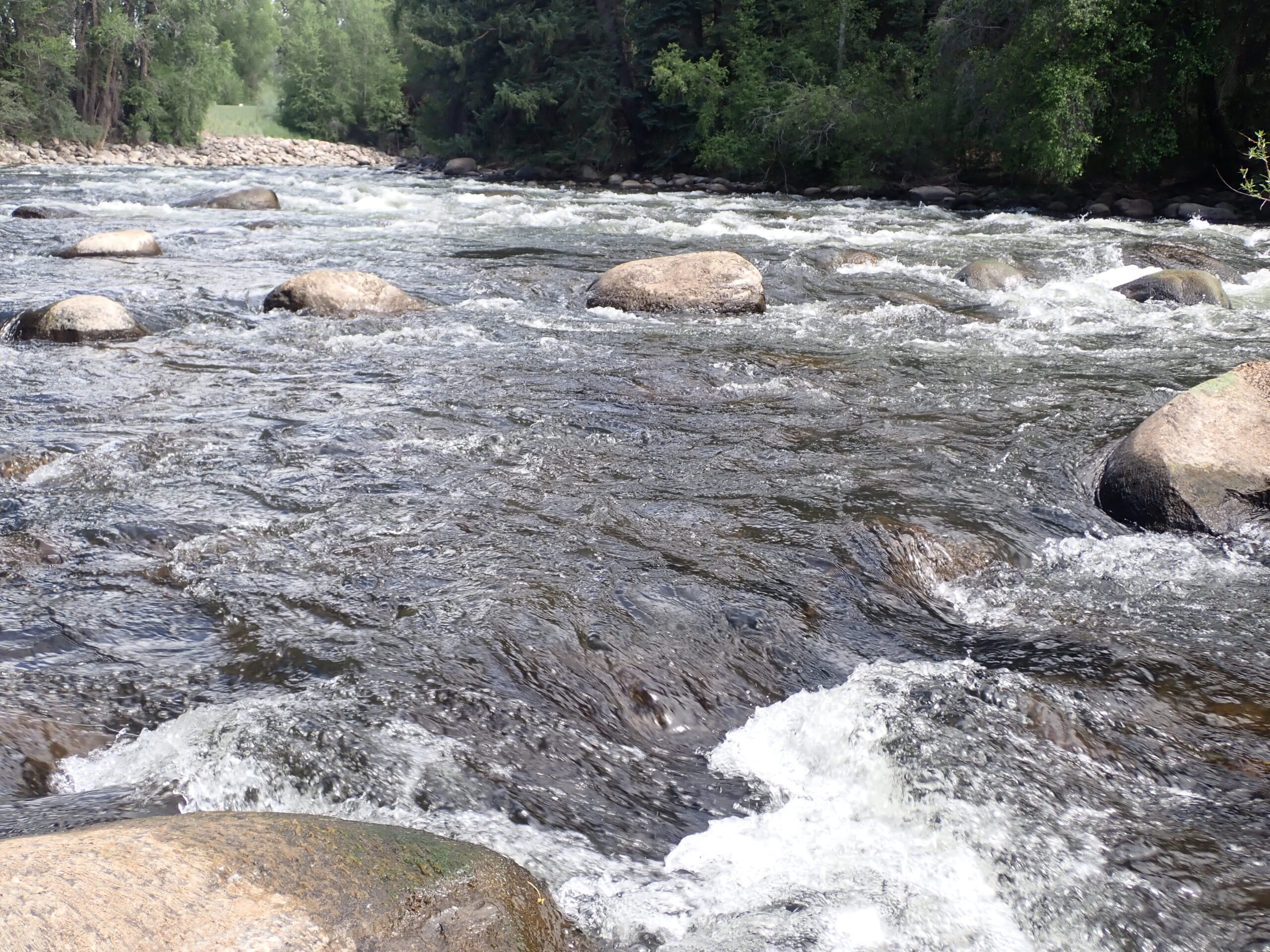 Between Middle of Three Exposed Rocks and Rock on Far Right
Between Middle of Three Exposed Rocks and Rock on Far Right Required a Fly Change
Required a Fly Change Deep Slot
Deep Slot Bravo
Bravo Large Deep Pocket
Large Deep Pocket Starting Point
Starting Point 700 – 800 CFS
700 – 800 CFS Early Catch
Early Catch Submerged Willows
Submerged Willows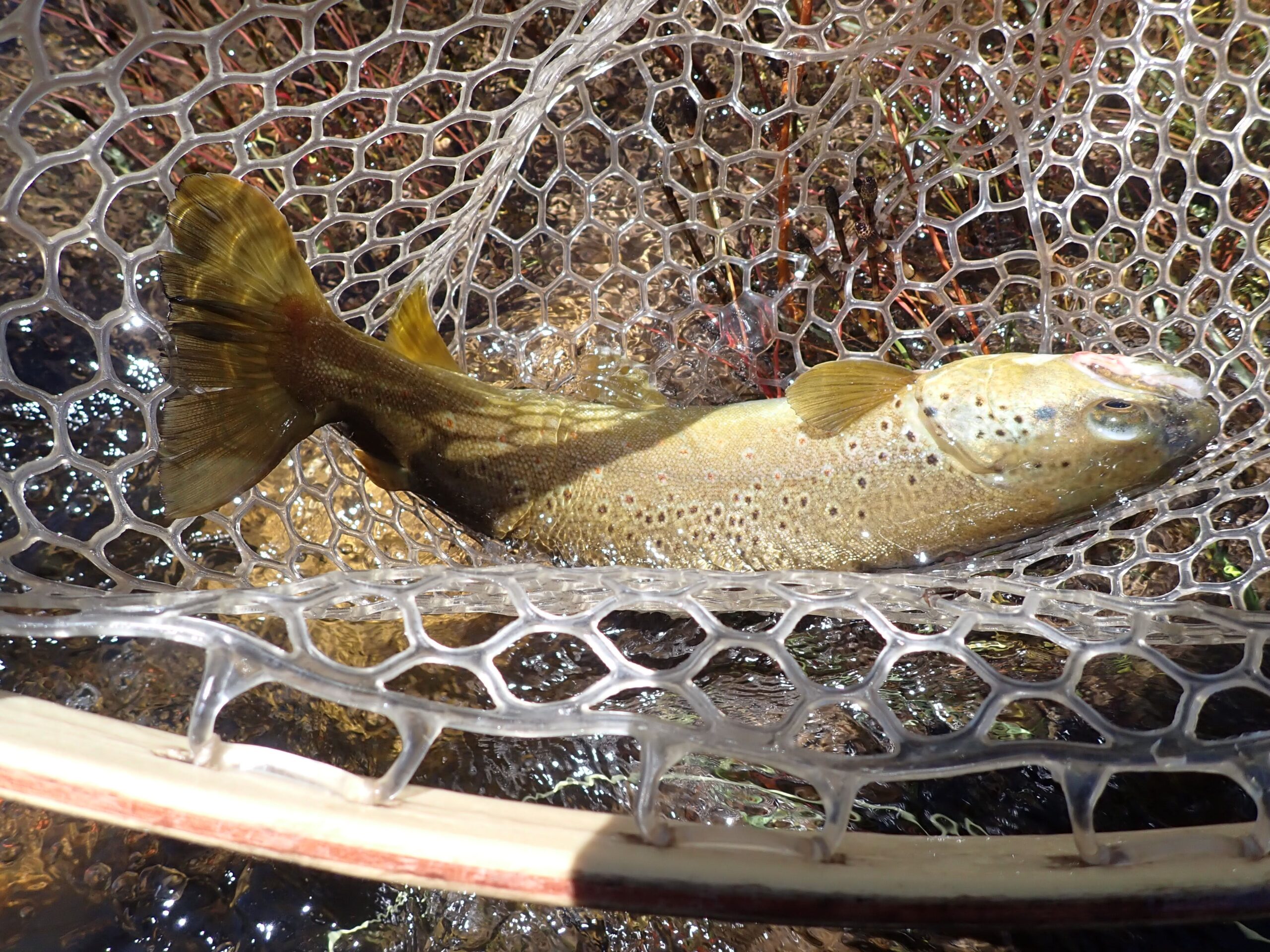 Much Appreciated Brown Trout
Much Appreciated Brown Trout Fighting Bow
Fighting Bow Deep Trough
Deep Trough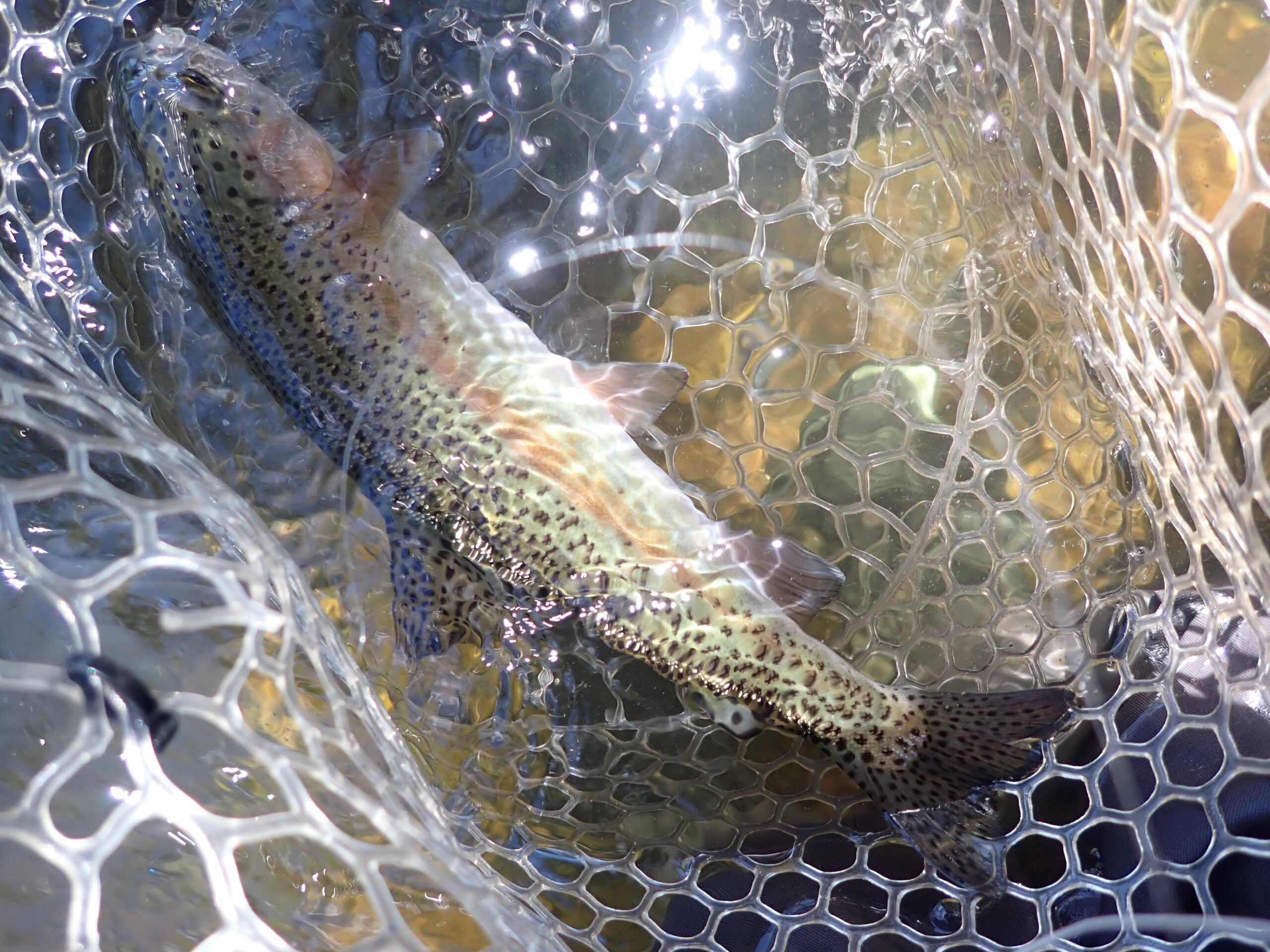 Pink Stripe
Pink Stripe Talon Wound Obvious
Talon Wound Obvious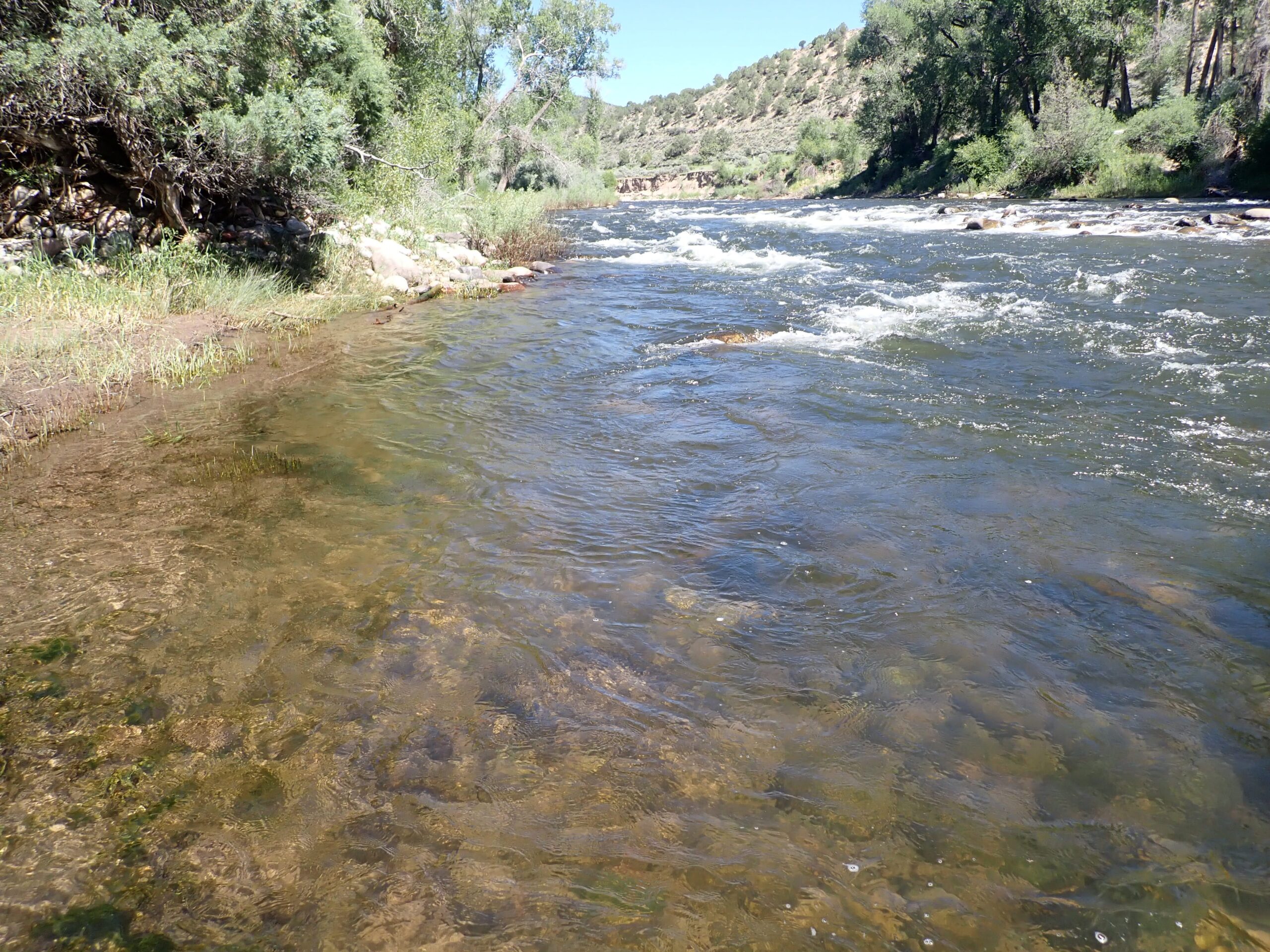 Home of Talon Wound Rainbow
Home of Talon Wound Rainbow Home of Comparadun Sipper
Home of Comparadun Sipper Fish of the Day
Fish of the Day